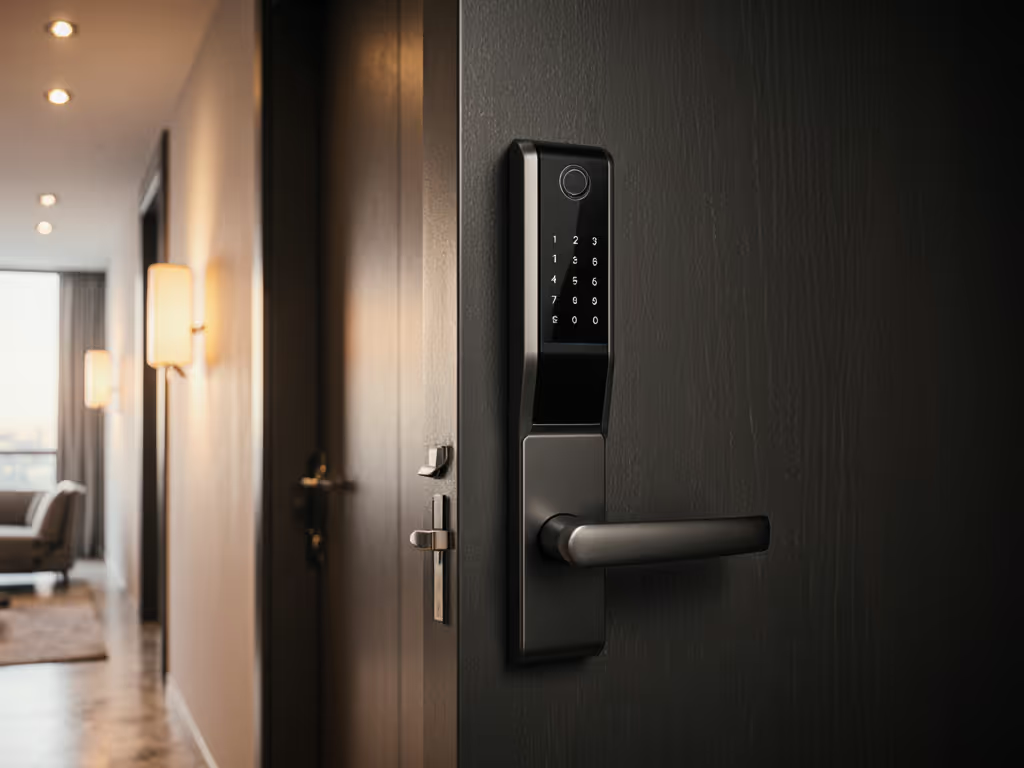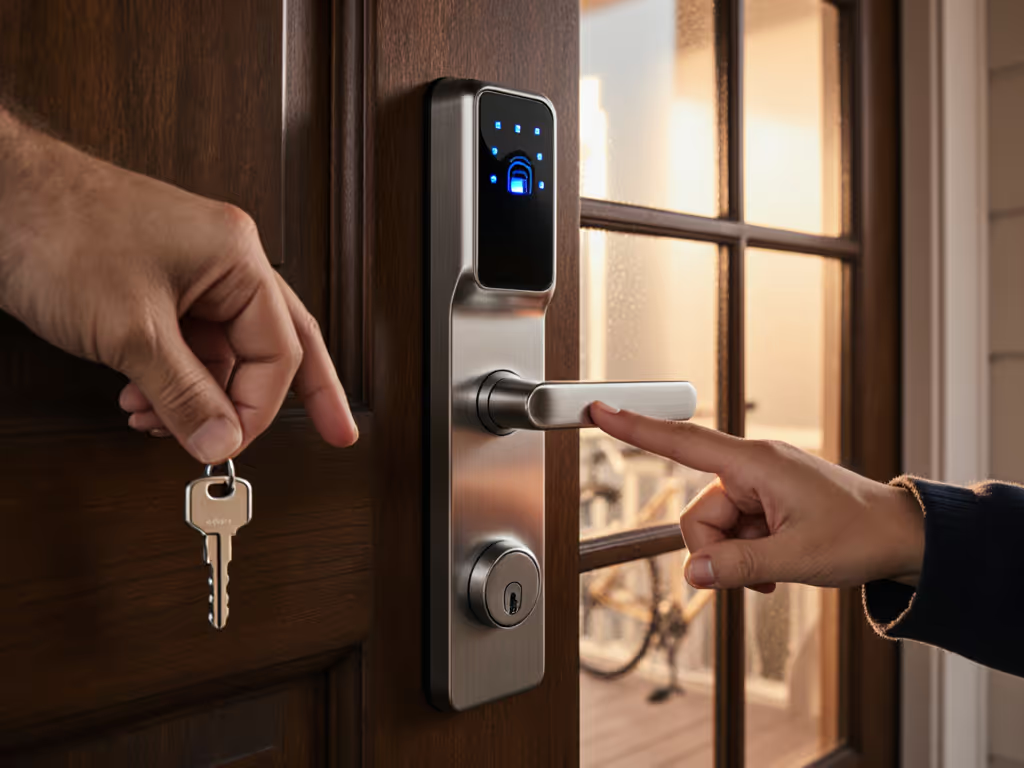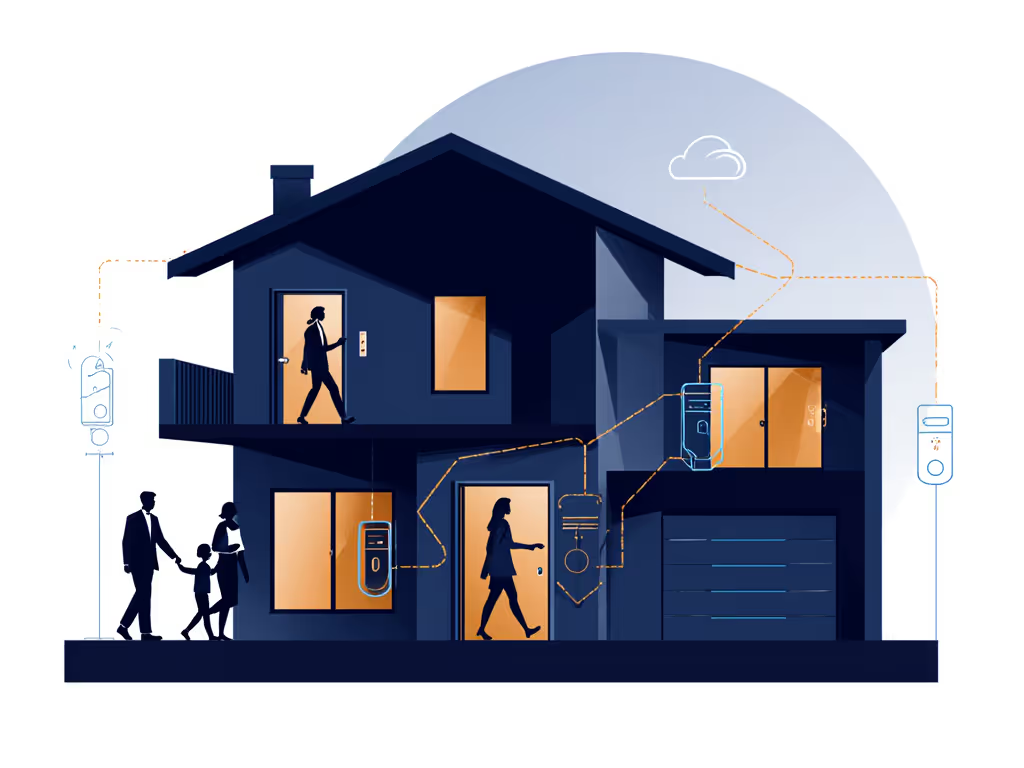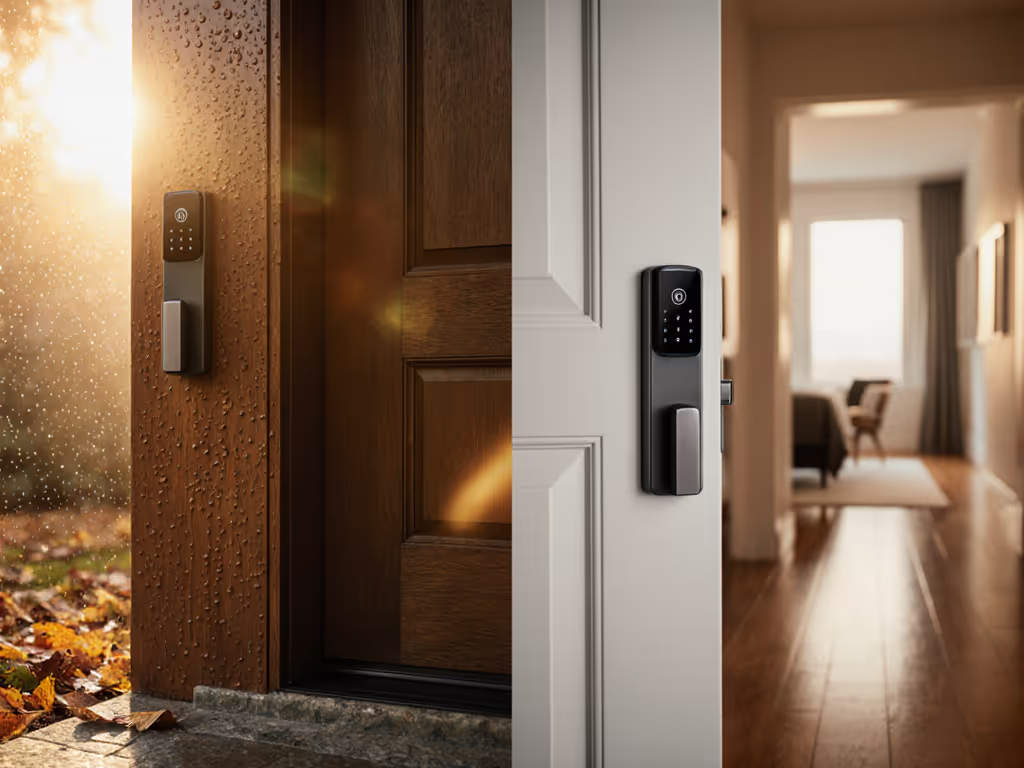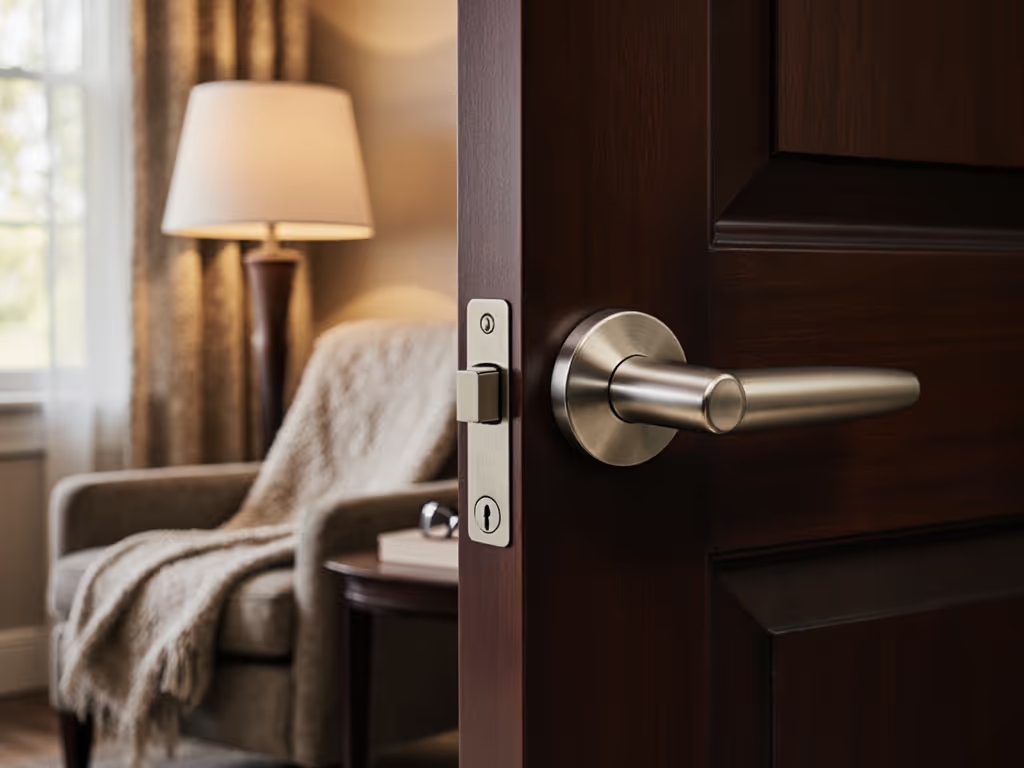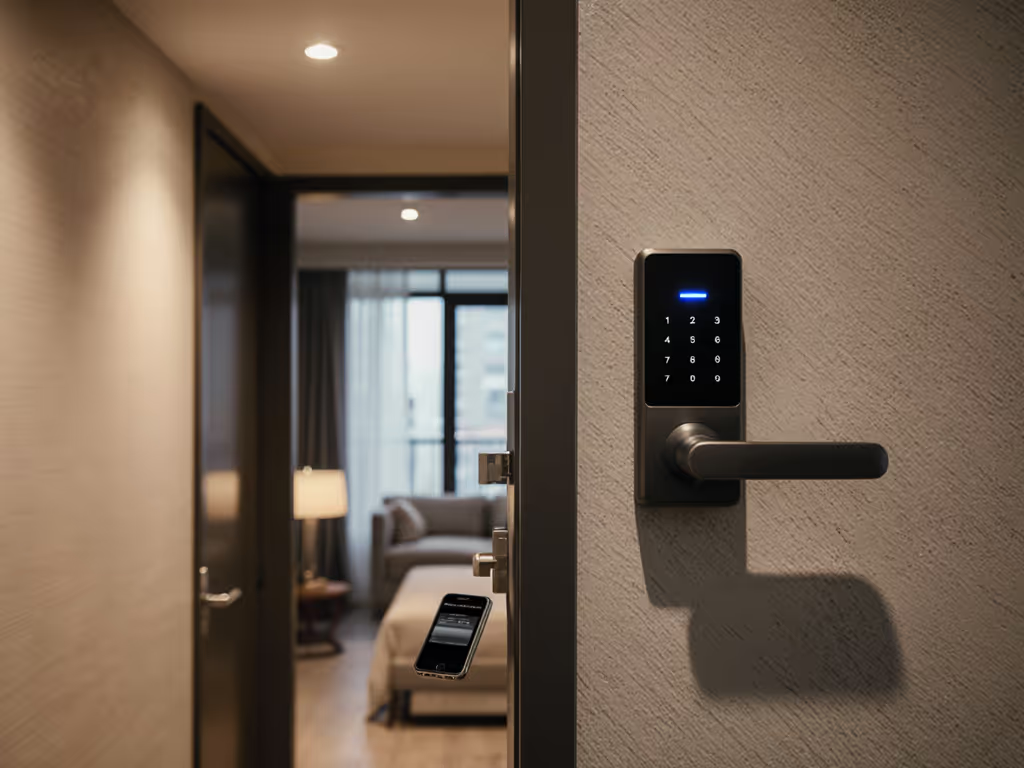Modern smart lock door locks and home security systems promise convenience but often introduce hidden dependencies that compromise family access reliability. As a home automation integrator specializing in standards-based deployments, I've witnessed how cloud-centric architectures fail precisely when families need them most (during emergencies, power outages, or platform shutdowns). Cloud-independent smart locks maintain family access protocols through local APIs, open standards, and carefully designed failure domains. For model recommendations and local setup tips, see our smart locks that work offline. The solutions below address critical scenarios from child safety smart locks to caregiver access needs without sacrificing sovereignty over your home security systems.
Why Cloud Dependency Puts Families at Risk
The Critical Failure Domain of Internet-Dependent Access
When internet connectivity fails (a 15-20% monthly occurrence in residential broadband according to FCC data), cloud-reliant smart locks often revert to basic mechanical operation, removing essential family access features like temporary codes for caregivers or remote unlocks for forgotten keys. During Hurricane Sandy, over 43% of New York City households experienced multi-day internet outages, rendering cloud-dependent locks incapable of generating emergency one-time access codes (a critical failure when elderly relatives needed caregiver entry).
Interoperate today, migrate tomorrow, and stay sovereign throughout. This principle guides our approach to family access systems that must function through inevitable infrastructure disruptions.
Cloud-based architectures introduce three critical vulnerabilities for family scenarios:
- Authentication bottlenecks: Required cloud handshakes prevent local generation of temporary access codes for babysitters or delivery personnel
- Notification failures: Parents don't receive arrival alerts when children return home if local event logging isn't implemented
- Emergency access breakdowns: 911 responders cannot access verification systems when cloud platforms are unavailable
Local Execution Models for Family Access
Truly resilient family access systems execute critical functions at the network edge through local processing capabilities. When evaluating smart lock door locks for family scenarios, examine these technical specifications:
- Zigbee clusters supporting Door Lock Server (0x0101) with Local Operation command (0x00)
- Matter/Thread join behavior that establishes distributed access control without hub dependency
- Z-Wave S2 security framework for secure local key exchange between family members' devices
- BLE advertising intervals optimized for fast presence detection (under 500ms) for auto-unlock features
I recently migrated a family's smart lock system after their cloud provider terminated service (a scenario where Zigbee locks with documented cluster behavior allowed rebuilding local access controls within 48 hours). This experience reinforced my requirement: any smart lock for family use must support local API access to user management functions, enabling programmatic creation of temporary access codes without internet dependency.
Implementing Family-Centric Access Control
Child Safety Smart Locks: Technical Requirements
For households with children, smart locks must balance accessibility with safety constraints. The most reliable implementations avoid cloud dependencies through:
- Local geofencing that triggers age-appropriate access rules (e.g., preventing children from unlocking doors until parent arrives)
- Bridge vs end device roles configured to maintain local operation when hubs fail
- Tamper-resistant temporary code generation stored locally for emergency access
When selecting systems for child safety smart locks, verify local processing of:
- Time-bound access restrictions (e.g., "only between 3-5PM after school")
- Multi-factor confirmation for external access requests
- Local audit logs showing all access attempts (critical for verifying child arrival times)
Elderly Access and Caregiver Needs
Aging-in-place scenarios demand particularly robust local functionality. Nearly 68% of adult children assisting elderly parents cite "lockout anxiety" as a top concern according to AARP research. The most effective solutions implement:
- Mesh network participation (Zigbee 3.0 or Thread) ensuring lock remains accessible even when primary hub fails
- Local storage of emergency access codes valid during connectivity outages
- Z-Wave S2 security classes providing different access levels for family vs professional caregivers
Systems that require cloud verification for each caregiver visit create unacceptable risk during internet outages. Local fallback modes must maintain essential functionality through documented cluster behaviors.
Migration Strategies for Family Access Systems
Evaluating Existing Installations
Before upgrading your smart lock ecosystem, conduct a protocol assessment:
- Test cold starts and power cycles to verify local functionality returns within 90 seconds
- Document all access methods requiring cloud verification (e.g., temporary codes, remote unlocks)
- Identify single points of failure in the access chain (usually the cloud authentication server)
Systems passing this evaluation maintain family access functionality when isolated from the internet. Failures typically manifest as:
- Temporary code generation requiring cloud signature
- Auto-lock functionality disabling during outages
- Door status monitoring ceasing when cloud connectivity drops
Transitioning to Cloud-Independent Systems
When migrating existing family access systems, follow this phased approach:
- Preserve mechanical backup: Maintain physical key access during transition
- Implement parallel local execution: Deploy new locks with local API access while maintaining existing system
- Gradual permissions migration: Transfer user profiles through local API endpoints rather than cloud export
For systems already using Zigbee or Z-Wave, leverage existing mesh capabilities to establish local control before disconnecting from cloud services. Verify Matter/Thread join behavior supports distributed access control among family members' devices without requiring central coordination.
Critical Considerations for Family Deployments
Security Without Surveillance
Privacy-conscious families increasingly reject systems that collect access pattern data for advertising purposes. Select locks that:
- Store audit logs locally with optional encrypted cloud backup
- Implement local processing of access rules rather than cloud-based decision making
- Provide verifiable security through documented cryptographic implementations
Avoid systems making unverifiable security claims about "military-grade encryption" without specifying algorithms and key management processes. True security transparency includes documentation of:
- Key rotation procedures for local networks
- Secure boot implementation details
- Physical tamper detection mechanisms
Future-Proofing Family Access
The most common failure I observe is systems designed for today's convenience but unable to adapt to tomorrow's needs. When selecting smart lock door locks:
- Confirm documented local API for programmatically managing temporary access codes
- Verify physical security ratings (BHMA Grade 1 equivalent) for long-term mechanical reliability
- Document failure domains through network partition testing
Test cold starts and power cycles regularly to ensure family access systems maintain functionality through inevitable disruptions.
Conclusion
Cloud-independent smart lock door locks represent the only sustainable approach to family access management that withstands platform shutdowns, internet outages, and evolving family needs. By prioritizing open standards implementation and thoroughly documenting local execution paths, homeowners can achieve the ideal balance of convenience and resilience required for child safety smart locks, elderly access needs, and general family smart lock management.
For those ready to explore standards-compliant implementations, our technical repository documents verified local API implementations across major smart lock platforms (including detailed cluster mappings for creating temporary access codes without cloud dependency). These resources provide the protocol-level understanding necessary to implement truly resilient family access systems that maintain functionality through inevitable infrastructure disruptions.
Further Exploration: Review our Matter Access Control implementation guide detailing how to configure local-only temporary access codes across certified platforms, or examine our failure domain analysis of leading smart locks during network partition scenarios.
